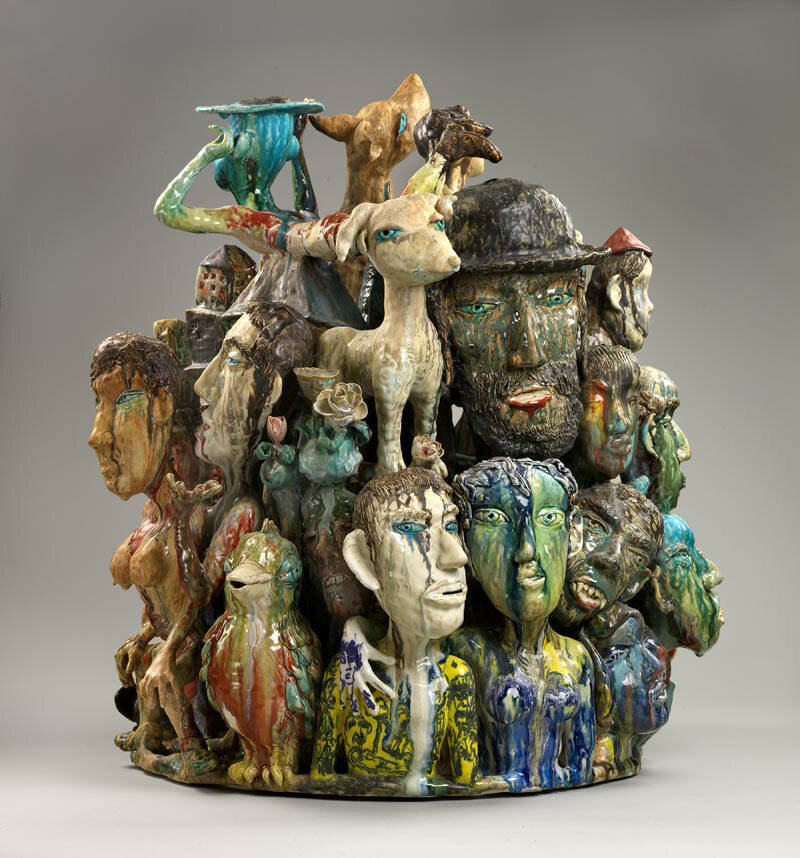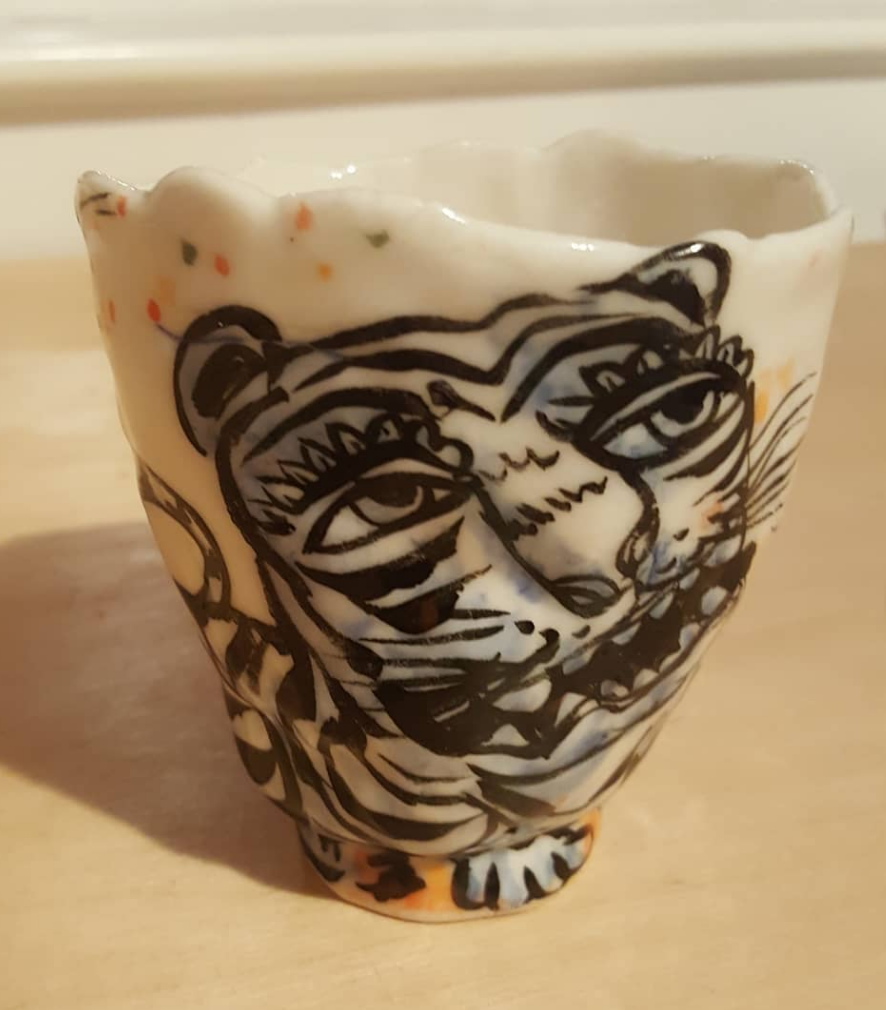SunKoo Yuh: defying linear narrative
I’m not the first person to say this, and certainly won’t be the last, but SunKoo Yuh’s sculptures are huge, so no photo really does them any justice. At their tallest they can be 13 to 14 feet high, and even the smaller pieces are deceptively big. Part of this deception comes from the lack of consistent scale where the sizes can vary from character to character within one sculpture, and even within one character, with over-sized heads a frequently recurring feature. Yuh’s sculptures are initially difficult to read, as they can be studied from top to bottom and 360 degrees around; the viewer needs to invest time to unpick them.
“It is through the process of building, casting, and deductive sculpting that Yuh’s work defies a straightforward linear narrative format. Working vertically, the work compresses time and space as each element responds to objects both above and below it.”1
Unlike a few of my previous blogs, my research around Yuh is specifically focused on a couple of aspects of his work – tigers and drawing. The very simple reason for this is because there was no way that we could get one of his sculptures from the US to the UK for the show, but transporting one of his delicate, tall, porcelain, Japanese teacups, a yunomi (pictured), was achievable.
“The tiger is a friendly symbol, and in Korea tigers guard such propitious sites as the new home or the eternal home – the gravesite… The tiger’s warm and gentle repose celebrates the care and love SunKoo Yuh has for his Korean legacy.”2
On this particular yunomi two tigers study each other closely, a front paw of one tiger resting on the paw of the other, with a crow looking on from a branch behind them. Male tigers are solitary creatures in the wild apart from when they encounter their offspring, while female tigers raise their young to a certain point until they see the females as a threat and stop hunting for them. All of which makes me think that these two tigers are a parent and an adolescent cub. Compared to Yuh’s complex layers of sculptural elements they are also incredibly simple, decorated with delicate brush strokes and minimal colours.
“All of the characters in Yuh’s sculptures are, in part, self-portraits, testaments to the multiple roles and personae a single person can assume.”3
The minimal style of his yunomis and monochrome drawings echo traditional Korean ceramics, in particular Punch'ong or Buncheong ware, with its minimal brushstrokes and black highlight glazes. The porcelain that Yuh uses only serves to amplify the designs, its translucence in sunlight creating an inner image of the tigers. His drawings are pen and ink on traditional handmade paper, but much closer to his complex sculptures with their masses of characters and slightly looser handling of the material. With their monochrome outlines and recurring characters there is something comic book-like about their appearance, particularly as Yuh likes to put three or four together as a series, almost a nod to American art history from a Korean who has lived in the US for over 30 years.
“SunKoo Yuh has melted all of the dualities and influences into a singular whole, as he identifies with all aspects of the arts that have touched his being.”4
The other animal, along with whichever animal is that year’s Korean zodiac sign, that repeats within Yuh’s work is often “…an oversized bird that looks like a crow, a character from Yuh’s imagination that he associates with michief”5 , and on this yunomi that crow is perched right behind the hindquarters of both the tigers, in their blind spot, on the branch of a tree that has no trunk but soft blossoms. On this yunomi the crow seems more of a voyeur than a figure of mischief, but it does have a slightly wry smile.
It is not easy to see SunKoo Yuh’s work in the UK and his exhibitions in the US are rarities, but I encourage you all to look at some of his exhibition installation and studio pictures online.
“SunKoo Yuh has said that he depicts his experience as if writing in a diary… [his] sculpture creates a tangible site that provokes the imagination to recognize, relive, explore and connect inner emotional truths.”6
These blog posts are published monthly, but if you want to access more exclusive content and to help my research, please consider supporting me on Patreon.
I also post photos daily to my Instagram profile.
Edited by Sarah McGill
1 – Melissa Caldwell; SunKoo Yuh: Along the Way; 2007; Philadelphia Art Alliance
2 & 4 – Helen Williams Drutt; SunKoo Yuh: Along the Way; 2007; Philadelphia Art Alliance
3 & 5 – Kate Bonansinga; Renwick Craft Invitational 2009: Staged Stories; 2009; Smithsonian American Art Museum with Scala Publishing Ltd
6 – Wayne Higby; SunKoo Yuh: Along the Way; 2007; Philadelphia Art Alliance
SunKoo Yuh; Memory Of Pikesville; 2008
SunKoo Yuh; Tiger yunomi; 2020
SunKoo Yuh; Tiger yunomi; 2020
SunKoo Yuh; Tiger yunomi; 2020



